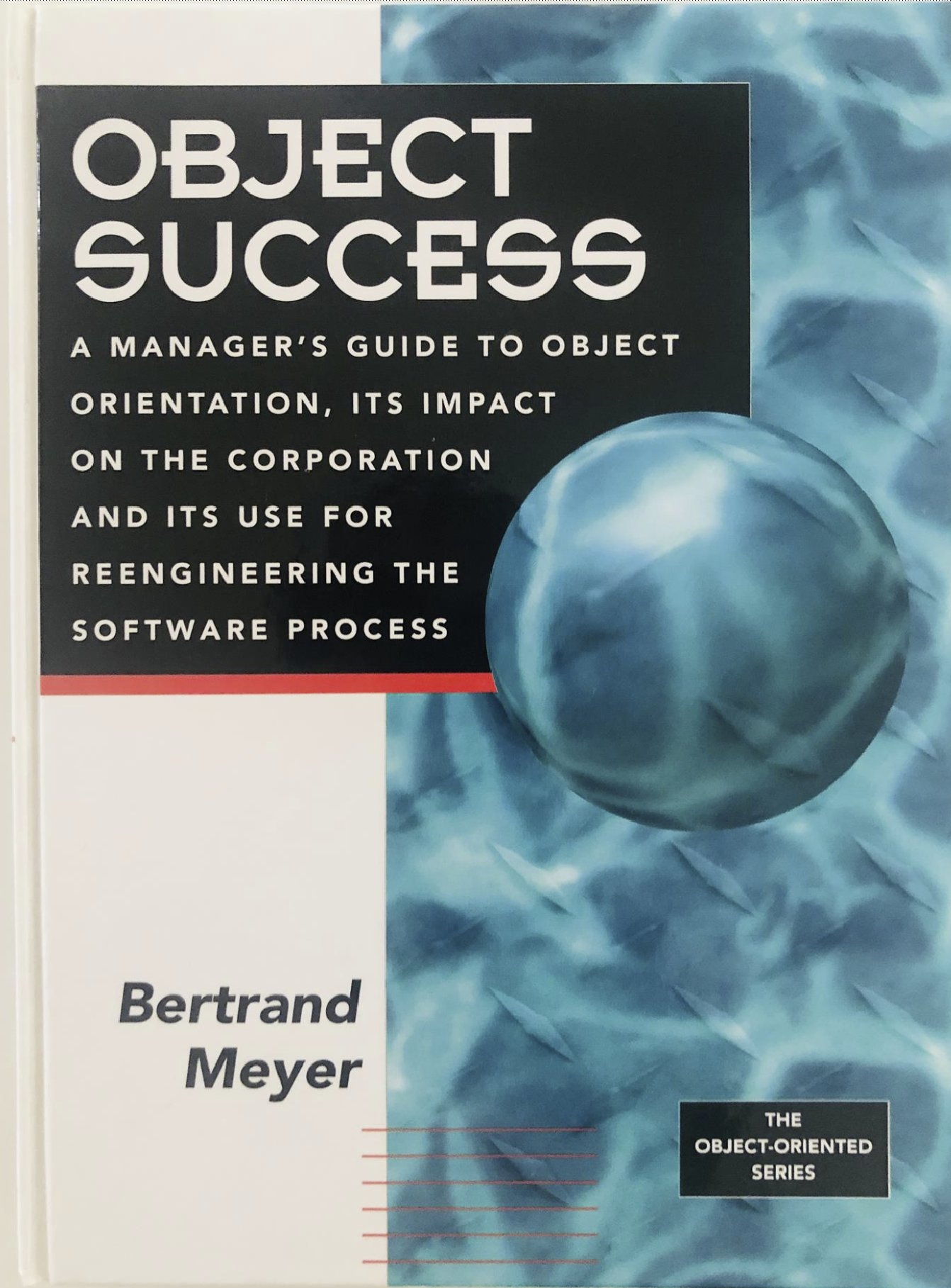A full, free online version of Object Success
(1995)
Copyright notice: The text is not in the public domain. It is copyrighted material (© Bertrand Meyer, 1995, 2023), made available free of charge on the Web for the convenience of readers, with the permission of the original publisher (Prentice Hall, now Pearson Education, Inc.). You are not permitted to copy it or redistribute it. Please refer others to the present version at bertrandmeyer.com/success.
The text (3.3 MB) is available here for download.
(Please do not bookmark or share the above download link as it may change, but use the present page: https:/bertrandmeyer.com/success.) The text is republished identically, with minor reformatting and addition of some color. (There is only one actual change, a mention of the evolution of hardware resources, on page 136, plus a reference to a later book added to a bibliography section on page 103.) This electronic version is fully hyperlinked: clicking entries in the table of contents and index, and any element in dark red such as the page number above, will take you to the corresponding place in the text.
The book is a presentation of object technology for managers and a discussion of management issues of modern projects. While it is almost three decades old. and inevitably contains some observations that will sound naïve by today’s standards, I feel it retains some of its value. Note in particular:
- The introduction of a number of principles that went radically against conventional software engineering wisdom and were later included in agile methods. See Agile! The Good, the Hype and the Ugly, Springer, 2014, book page at agile.ethz.ch.
- As an important example, the emphasis on the primacy of code. Numerous occurrences of the argument throughout the text. (Also, warnings about over-emphasizing analysis, design and other products, although unlike “lean development” the text definitely does not consider them to be “waste”. See the “bubbles and arrows of outrageous fortune”, page 80.)
- In the same vein, the emphasis on incremental development.
- Yet another agile-before-agile principle: Less-Is-More principle (in “CRISIS REMEDY”, page 133).
- An analysis of the role of managers (chapters 7 to 9) which remains largely applicable, and I believe more realistic than the agile literature’s reductionist view of managers.
- A systematic analysis of what “prototyping” means for software (chapter 4), distinguishing between desirable and less good forms.
- Advice on how to salvage projects undergoing difficulties or crises (chapters 7 and 9).
- A concise exposition of OO concepts (chapter 1 and appendix).
- A systematic discussion of software lifecycle models (chapter 3), including the “cluster model”. See new developments on this topic in my recent “Handbook of Requirements and Business Analysis”, Springer, 2022, book page at bertrandmeyer.com/requirements.
- More generally, important principles from which managers (and developers) can benefit today just as much as at the time of publication.




